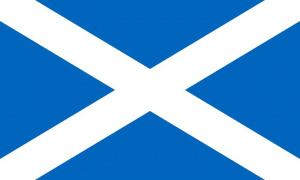Language/Scottish-gaelic/Grammar/Noun-Gender-and-Plurals
In Scottish Gaelic, like many other languages, most nouns belong to a gender category: masculine or feminine. Noun gender is important because it can affect the endings of other words in the sentence, such as adjectives and articles. It is also essential when forming plural nouns. This lesson will introduce you to Scottish Gaelic noun gender and plurals, and provide you with tips on how to identify the gender of nouns.
Nouns in Scottish Gaelic
Nouns in Scottish Gaelic can either be masculine or feminine. There are no strict rules for determining the gender of a noun, but there are some general guidelines to keep in mind:
- Nouns denoting male beings are typically masculine, and those denoting female beings are feminine. For example, fear (man) is masculine, while bean (woman) is feminine.
- Nouns denoting inanimate objects can be either masculine or feminine. For example, ball (ball) is masculine, while cù (dog) is feminine.
- There are some nouns that are exceptions to these guidelines. For example, tì (house) is feminine, and teine (fire) is masculine.
It's essential to learn the gender of a noun when forming the plural.
Forming Plurals in Scottish Gaelic
To form the plural of Scottish Gaelic nouns, there are a few rules and exceptions to consider.
Regular Plurals
In Scottish Gaelic, most nouns form their plural by adding "-an" to the end of the singular form. For example:
| Scottish Gaelic | Pronunciation | English |
|---|---|---|
| caileag | [ˈkʰal̪ʲəkʰ] | girl |
| caileagan | [ˈkʰal̪ʲəkʰan] | girls |
| càr | [kaːr] | car |
| càran | [kaːran] | cars |
| cù | [kuː] | dog |
| coin | [koːɲ] | dogs |
Plurals with Vowel Changes
Some nouns undergo vowel changes when forming the plural. For example, the noun clach (stone) changes its vowel in the plural:
| Scottish Gaelic | Pronunciation | English |
|---|---|---|
| clach | [kʰl̪ˠaç] | stone |
| clachan | [kʰl̪ˠaçan] | stones |
Plurals with Consonant Changes
Similarly, some Scottish Gaelic nouns undergo consonant changes when forming the plural. For example, the masculine noun cearc (chicken) changes its "c" to a "g" in the plural:
| Scottish Gaelic | Pronunciation | English |
|---|---|---|
| cearc | [kʲerk] | chicken |
| gearcan | [kʲerkan] | chickens |
There are more exceptions, and it is essential to memorize the rules and exceptions to be able to correctly form plural nouns in Scottish Gaelic.
Definite Articles with Nouns
Definite articles are used before singular nouns to indicate that the speaker is referring to a specific object or thing. In Scottish Gaelic, there are two forms of the definite article: an and am.
- The article "an" is used before masculine nouns. For example, an taigh (the house).
- The article "am" is used before masculine nouns that begin with a vowel. For example, am buidheann (the group).
- The article "an" is also used before feminine nouns. For example, an teine (the fire).
Indefinite Articles with Nouns
Indefinite articles are used before singular nouns to indicate that the speaker is referring to a nonspecific object or thing. In Scottish Gaelic, there are two forms of the indefinite article: a and an.
- The article "a" is used before masculine nouns. For example, a bhean (a woman).
- The article "an" is used before feminine nouns. For example, an cat (a cat).
Conclusion
Scottish Gaelic nouns belong to one of two genders: masculine or feminine. There are some guidelines for determining the gender of a noun but no strict rules. It is essential to learn the gender of a noun when forming plural nouns because it can affect the endings of other words in the sentence. Most nouns form their plural by adding "-an" to the singular form, but some have vowel or consonant changes in the plural. In Scottish Gaelic, there are two forms of the definite and indefinite article that are used before singular nouns to indicate specificity. With this lesson's tips and examples, you should now have a better understanding of Scottish Gaelic noun gender and plurals.

